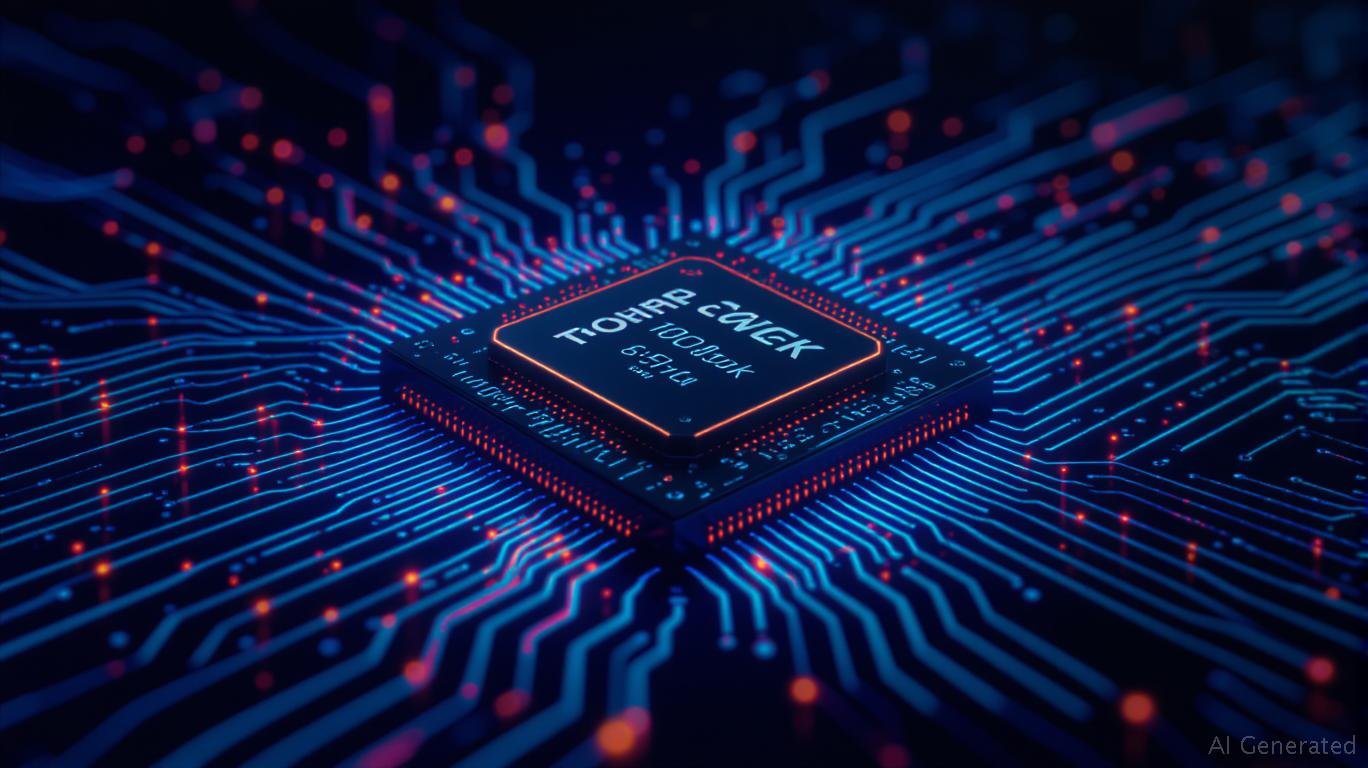Broadcom's Unseen Edge: How High-Speed Interconnects Are Fueling AI Infrastructure Dominance
The race to build AI infrastructure is often framed as a battle between GPU giants like
and . Yet buried beneath the hype is a critical but underappreciated player: (AVGO), which is quietly securing its position as the backbone of the AI revolution through its mastery of high-speed interconnects and scale-up networking. While GPU-centric competitors grab headlines, Broadcom's focus on the “plumbing” of AI data centers—its networking chips, co-packaged optics, and open standards—could prove to be the most profitable and enduring advantage in this era.The Stealth Leader in AI Networking
Broadcom's Tomahawk 6 Ethernet switch, launched in 2024, is a technological marvel. Packing 102.4 terabits per second (Tbps) of bandwidth—double its predecessor—the chip enables hyperscalers like
and to build AI clusters spanning 128,000 GPUs with just 750 switches. This is no small feat: at such scales, latency and bottlenecks can cripple training efficiency. Tomahawk 6's 1,024 100Gbps SerDes ports and co-packaged optics (CPO) integration slash power consumption by 3.5x compared to legacy systems, making it a cost-effective solution for data centers racing to scale.
Why Interconnects Matter More Than GPUs
The AI revolution isn't just about raw compute power; it's about how efficiently data moves between chips. NVIDIA's GPUs dominate training workloads, but their proprietary NVLink interconnects have limits. Broadcom's open Scale-Up Ethernet (SUE) framework, by contrast, offers a modular, standards-based alternative that avoids vendor lock-in. This is why hyperscalers like TikTok and OpenAI are adopting Broadcom's solutions: they can mix-and-match GPUs, ASICs, and FPGAs in a single network, reducing costs and future-proofing their infrastructure.
Meanwhile, Broadcom's XPU (eXtreme Processing Unit) custom ASICs—tailored for specific AI tasks—are eating into GPU market share. While NVIDIA's GPUs remain versatile, XPUs deliver 40% higher performance-per-watt for inference tasks like image recognition or chatbots, making them ideal for monetizing trained models.
Margin Resilience in a Volatile Market
Broadcom's financials tell a compelling story. In fiscal 2024, AI-related revenue surged 220% year-over-year to $12.2 billion, with gross margins exceeding 40%—a stark contrast to Intel's struggling networking division, which posted just 16% margins. Even as competitors face supply chain hiccups or regulatory headwinds, Broadcom's 3nm chip manufacturing with
and VMware's subscription-based software (now 87% migrated to cloud platforms) provide a steady cash flow.
The Hidden Growth Catalyst: Co-Packaged Optics (CPO)
Broadcom's third-gen CPO technology, paired with Tomahawk 6, supports 512 200Gbps fiber ports today and aims for 400Gbps lanes by 2028. This leap isn't just about speed—it's about reducing operational costs. By integrating optics directly into switch ASICs, CPO cuts the need for expensive transceivers and reduces latency by 20–30%. Analysts estimate Broadcom's addressable market for CPO alone could hit $9 billion by 2027, a niche where NVIDIA and AMD still lag.
Risks on the Horizon
No investment is without risks. Broadcom's 95% reliance on TSMC for chip production leaves it vulnerable to supply chain disruptions, while U.S. export controls could constrain sales to Chinese customers. Competitors like
and are also ramping up high-speed switch offerings. Yet these risks are offset by Broadcom's $6.4 billion in free cash flow (Q2 2025) and its patent portfolio of 21,000+ IP assets, which form a sturdy moat.Investment Thesis: Buy the “Plumbing” of AI
Investors focused solely on GPU stocks are missing a key lever of AI infrastructure: the networks that power it. Broadcom's 38.2x forward P/E ratio may seem high, but its margin resilience and secular growth in AI—projected to hit $30 billion in revenue by 2026—justify optimism. With a $387.68 consensus price target (up from $275 in late 2025),
offers a rare blend of stability and innovation.Buy if:
- You believe hyperscalers will prioritize cost-efficient, open-standard networks over proprietary GPU ecosystems.
- CPO adoption accelerates, boosting Broadcom's AI semiconductor margins.
Avoid if:
- An “AI winter” stifles capital spending, though inference demand is already diversifying revenue streams.
- TSMC's capacity constraints limit chip production.
Final Take
Broadcom isn't the flashiest name in AI, but its dominance in high-speed interconnects and scale-up networking positions it to profit long after the GPU hype cycle cools. As data center architects prioritize scalability, interoperability, and efficiency, Broadcom's underappreciated edge could make it the ultimate winner in this race. For investors seeking a steady hand in the AI storm, look beyond the GPUs—Broadcom's pipes are the real gold.
Sign up for free to continue reading
By continuing, I agree to the
Market Data Terms of Service and Privacy Statement

Comments
No comments yet